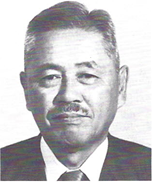Continue the pre-Assembly or outsource it
STARTING SITUATION:
The producer was faced with the choice: continue the pre-assembly activity or outsource this work. The factory had been pre-assembling itself for years. The employees themselves had already taken measures more often in order to become more productive. In order to maintain the work in the plant, a study was needed to increase workplace optimisation. The basic question also revealed that the MTM standard times also needed to be revised. Now, a better combination does not exist. Because every change is immediately measurable. Areas, number of employees and savings follow from the analysis.
CHOSEN APPROACH:
Firstly all the existing standard times were updated. In parallel, the layout of the departments, tools, and the supply and goods delivery were examined. Paths are shown by spaghetti-diagrams. By classifying potential improvements in a short, medium and long term, the benefit per phase became
Continue reading “Case: “continue the pre-Assembly or outsource it?””
